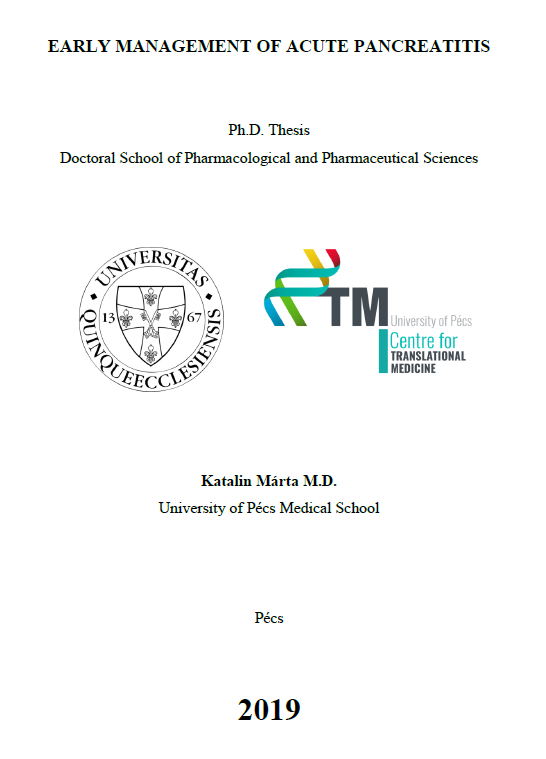Early Management of Acute Pancreatitis
Abstract
The annual incidence of acute pancreatitis (AP) ranges from 10 to 100 cases per 100,000 persons 11, showing an increasing tendency throughout the past decades 12. Multiple theories have been proposed to explain the increment: better diagnostics (e.g., general access to the measurement of pancreatic enzymes) 13, lifestyle factors (e.g., obesity, alcohol consumption, and tobacco use) 14,15 as well as aging of the population 16 have been implicated.
Life expectancy has dramatically risen by 16 years (from 55.4 yrs to 71.4 yrs) in the last half century, causing a number of changes and challenges to economies and healthcare systems. Needless to say, healthcare professionals should focus more intensively on the effects of aging on the course and outcome of diseases.
Age has been used as a predictive marker in different scoring systems for AP. It has been shown that advanced age is associated with more severe AP and higher mortality. However, since the risk of morbidities increases with age, it is not clear whether aging and/or comorbidities are the key deteriorating factor 23. In addition, it is also well reported that some of the diseases which develop based on the same etiological background (for example alcohol) are more frequent in AP. National cohort analysis showed variable rates of liver cirrhosis (LC) in alcoholic pancreatitis. The Spanish cohort showed 2% 31, the Czech one 16.7% 32, the Indian one 8.4% 33 and the Italian one 12.5% 34. We aimed to investigate (1) the effects of aging and (2) comorbidities on the outcome of AP. Moreover, we wished to understand which factors predict mortality or severity better. We choose the most appropriate clinical methodologies to answer each questions. To answer Aim III.2.1 we needed a preliminary sample size calculation. The event rate of mortality in AP is very low: 3/100. Therefore, it is not surprising that 10-50 thousand of patients would be necessary to answer Aim III.2.1 precisely. The only possible methodology which is feasible to collect such a high amount of patients is meta-analyses. In this part of the study we systematically reviewed the literature and performed a detailed meta-analysis performed using the preferred reporting items for systematic review and meta-analysis statement (PRISMA) 37. In order to provide the highest level of quality, the meta-analysis was registered with the PROSPERO registry (CRD42017079253). All details are described in the main thesis document.

